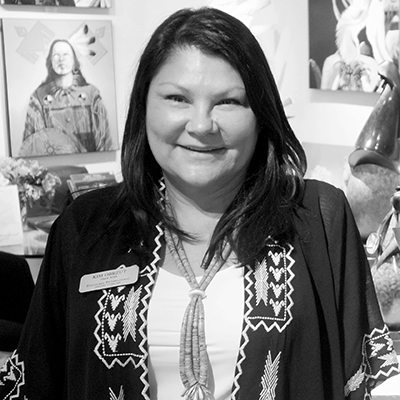“August Rain”
by: Kim Obrzut$4,000.00

Master artist Kim Obrzut first began producing her iconic Hopi maidens over twenty years ago. Originally working in the traditional scrape-and-smooth method that Hopi potters have used for thousands of years—including her own family ancestors—it wasn’t long before she transitioned into bronze. Employing her degree in Fine Arts from Northern Arizona University, Kim’s career soared alongside a body of work that seeks to preserve the traditions and culture of the Hopi.
When asked about her process, Kim says, “I now think back to my childhood and being with my grandfather, and how he was persistent in quality and traditional accuracy in how he carved dolls. . . . These beliefs still influence me today.”
Sitting in her studio, Kim once remarked, “after the corn was plenty, the arts were born to the Hopi.” In other words, the Hopi prayed, worked, cared for their family, and then developed the art forms we know today. Kim’s career is mirroring her statement; now that her three daughters are nearing adulthood she has more time than ever to devote to her art.
Kim has been featured in many national magazine articles and her works have been published in various books on Southwest Art. She has won numerous awards in Art and Sculpture shows across the United States in both Native and non-Native events. She has also had the privilege of being able to serve for two years on the Board of Directors for SWAIA, the organization that runs the Santa Fe Indian Market, the largest American Indian Art show in the United States.
Kim’s brilliant work can be found in numerous museum collections, corporate collections and private collections all over the world. She is a hugely successful bronze artist—a field typically dominated by men—and she is one of the first Hopis to successfully work in the fine art bronze medium.
Despite her extensive career, Kim nevertheless feels that she has only just scratched the surface of her cultural history. The Hopi Tribe of Northern Arizona is thousands of years old with much remaining to be told about the Hopi women and their powerful place in Hopi history. Through her art, Kim seeks to reveal even more of the essence of her cultural history and the rich heritage of the Hopi.






